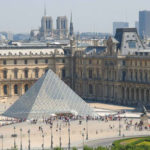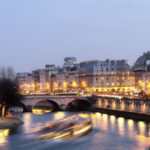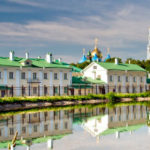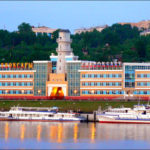22 interesting facts about museums
 It is in museums that mankind preserves its treasures, whose age is sometimes millions of years older than the age of mankind itself. And it is good that our ancestors once thought of putting up expositions in one place, thereby introducing other people to new knowledge. What would we do if there were no museums in the world at all?
It is in museums that mankind preserves its treasures, whose age is sometimes millions of years older than the age of mankind itself. And it is good that our ancestors once thought of putting up expositions in one place, thereby introducing other people to new knowledge. What would we do if there were no museums in the world at all?
In Moscow, the capital of our own country, there is the only museum in the world of the history of drunkenness.
The Paris Sewer Museum, annually visited by hundreds of thousands of tourists, is notable for the fact that it is located in the sewer. Not in the modern, but in the ancient, which remained from the century before last.
In Japan there is a unique museum of snowflakes with no less unique exhibits. Two identical snowflakes do not exist in nature, so all the exhibits there are presented in a single copy.
The Hollywood Museum of Death stores everything related to it, including objects of art created by serial serial killers and killers.
The Japanese city of Nagasaki is notorious for having dropped an atomic bomb on it during World War II. But the locals are not shy about their past, and they created a museum of the atomic bomb, the exhibits of which narrate about this tragic event.
The smallest museum in the world is located in Lithuania, in Bietai. It occupies one large hollow of an old oak.
In the Bolivian city of Potosi is the highest mountain museum in the world, lying at an altitude of about 4.1 km above sea level. The National Museum of Bolivia occupies the building of the former mint, built back in colonial times.
In Delhi, the Indian capital (more precisely, in the New Delhi region, where all the government bodies of the country are located) there is a kind of museum of toilets.
The German Museum of Lies is a joke from the world of museums. It is full of fictional exhibits, like Hitler’s mustache or Stalin’s personal mop.
In the Mexican resort city of Cancun, you can visit the underwater sculpture museum, located off the coast, at a depth of about 10 meters. This is not an ancient flooded city, no – the sculptures were lowered to the seabed not so long ago.
In Croatia, in Zagreb, there is a Museum of Broken Hearts dedicated to unhappy love.
Located in St. Petersburg, the Hermitage is the second largest museum in the world. If you set yourself the goal of simply walking through all its halls with a walking step, without stopping anywhere, you will have to spend more than twelve hours. But the Paris Louvre is even bigger!
The first of the Russian state-owned museums was the Tretyakov Gallery. The philanthropist Pavel Tretyakov created it at his own expense, but after that he officially donated it to Moscow and its inhabitants.
Of all the museums in the world, the largest collection of art within the same building is located in the aforementioned Hermitage.
The most visited museum in the world is the Louvre in Paris, the second most visited is the British Museum in London.
Located in Rome, the Capitoline Museum, opened in 1471, is the oldest of the existing public museums.
The Hermitage holds about 3 million exhibits, and the British Museum – about 8 million.
The largest tank museum in the world is the one located in the Russian Cuban.
The word “museum” goes back to the Greek “museon”, which translates as “temple of the muse”.
The most visited museum in the world is the Louvre. Every year it receives about 9 million tourists.
The most famous wax museum is Madame Tussauds. He owns about a thousand exhibits.
Most often, it is the Natural History Museum in New York that is shot in films. So, it can be seen in the films “Night at the Museum”, “Da Vinci Code” and some others.



























